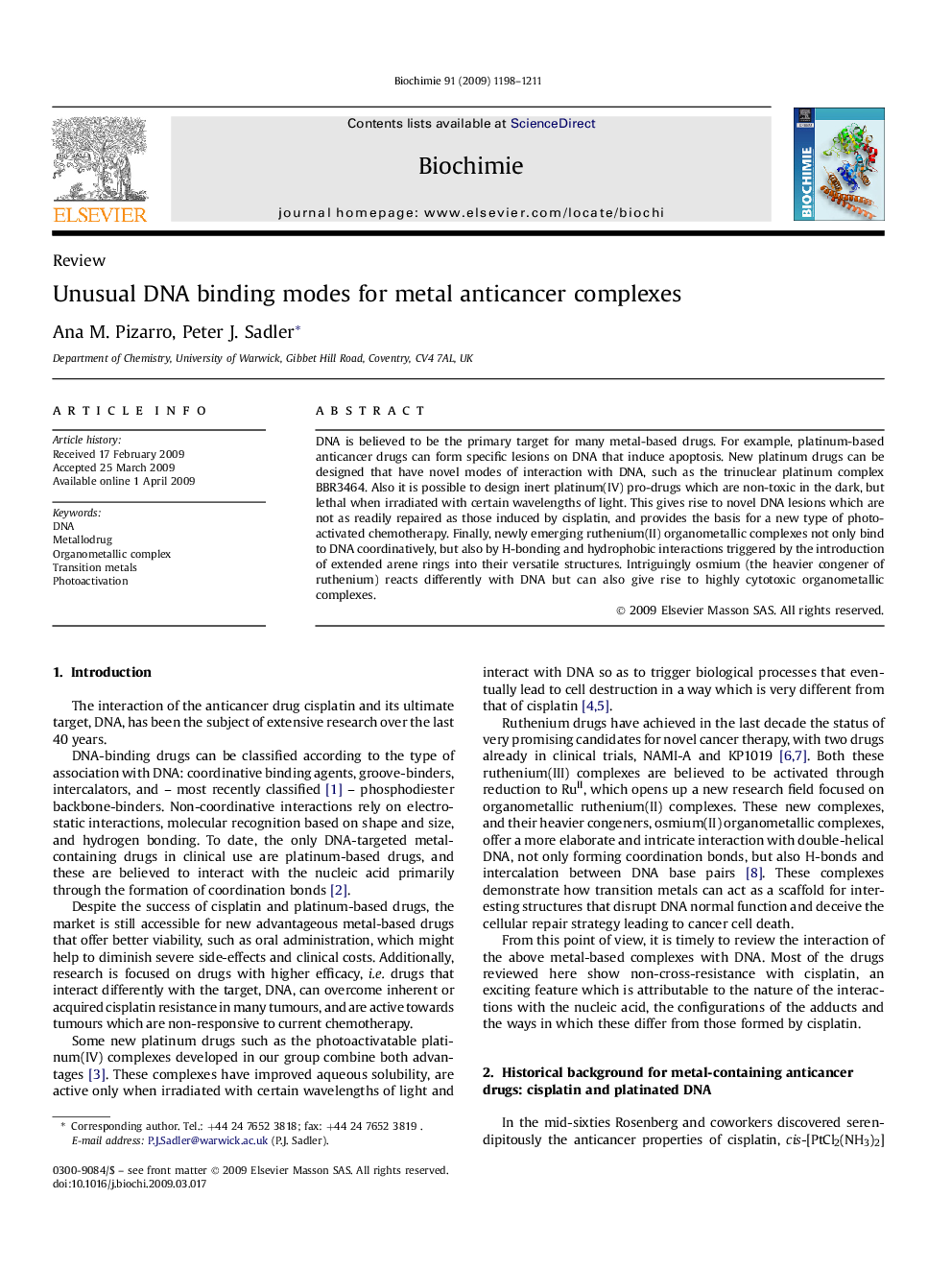| کد مقاله | کد نشریه | سال انتشار | مقاله انگلیسی | نسخه تمام متن |
|---|---|---|---|---|
| 1952387 | 1057208 | 2009 | 14 صفحه PDF | دانلود رایگان |

DNA is believed to be the primary target for many metal-based drugs. For example, platinum-based anticancer drugs can form specific lesions on DNA that induce apoptosis. New platinum drugs can be designed that have novel modes of interaction with DNA, such as the trinuclear platinum complex BBR3464. Also it is possible to design inert platinum(IV) pro-drugs which are non-toxic in the dark, but lethal when irradiated with certain wavelengths of light. This gives rise to novel DNA lesions which are not as readily repaired as those induced by cisplatin, and provides the basis for a new type of photoactivated chemotherapy. Finally, newly emerging ruthenium(II) organometallic complexes not only bind to DNA coordinatively, but also by H-bonding and hydrophobic interactions triggered by the introduction of extended arene rings into their versatile structures. Intriguingly osmium (the heavier congener of ruthenium) reacts differently with DNA but can also give rise to highly cytotoxic organometallic complexes.
Journal: Biochimie - Volume 91, Issue 10, October 2009, Pages 1198–1211